Philips PML8709 is a model that stands out in the offering of the Chinese-Dutch manufacturer due to its unconventionality. Instead of the classic operating system from Philips - TitanOS, we find here the already known Google TV, which provides extensive customization options and access to a rich library of applications. This is a television that, on one hand, tempts with very good contrast, and on the other – surprises with several unusual design decisions. When it comes to image quality, the PML8709 offers very good contrast, which, combined with wide color gamut coverage, ensures excellent color reproduction – especially after calibration. Despite the 60 Hz panel, the television also performs well in occasional gaming thanks to support for features such as ALLM, VRR, and a low input lag of around 13 ms. On the other hand, Philips has stripped this model of one of the biggest advantages of its televisions – the Ambilight system. This is a surprising decision that may disappoint many fans of the brand. Another weak point is performance in HDR – despite promising contrast results, the television performs average in this category. Maximum brightness and issues with detail in brighter scenes give the impression that something has evidently gone wrong in the implementation of this feature. The Philips PML8709 is a television full of contrasts. On one hand, it offers solid black quality and interesting solutions for gamers, on the other – some limitations, such as the lack of Ambilight or average brightness, mean that it is not a model without flaws. It is a good choice for those who appreciate the versatility of Google TV and are looking for a television for everyday use.
- Matching (Score)
- Our verdict
- TV appearance
- Where to buy
- Contrast and black detail
- HDR effect quality
- Factory color reproduction
- Color reproduction after calibration
- Smoothness of tonal transitions
- Image scaling and smoothness of tonal transitions
- Blur and motion smoothness
- Console compatibility and gaming features
- Input lag
- Compatibility with PC
- Viewing angles
- Daytime performance
- Panel details
- TV features
- Apps
- Playing files from USB
- Sound
Philips PML8709 vs LG QNED91T6A
Direct comparison
Check the best price offer:
LG QNED91T6AQNED91T / QNED90T


Panel type: LCD VA
Resolution: 3840x2160
System: Google TV
Model year: 2024
Complete the survey to find out the result

Panel type: LCD VA
Resolution: 3840x2160
System: WebOS
Model year: 2024
Complete the survey to find out the result

Overall rating
6.1
7.2
Movies and series in UHD quality
6.3
6.7
Classic TV, YouTube
6.6
6.9
Sports broadcasts (TV and apps)
5.6
6.8
Gaming on console
7.2
8.5
TV as a computer monitor
3.5
7.6
Watching in bright light
4.8
6.1
Utility functions
6.5
8.4
Apps
9.6
8.3
Sound quality
5.1
6.9
Complete the survey to find out what fits your preferences
Advantages
Google TV operating system - intuitive and versatile
Very good contrast
Very good coverage of the DCI-P3 and BT.2020 color gamut
Low input lag - about 13 ms
Support for ALLM, VRR, and HGiG in gaming mode
Good contrast - VA panel
Suitable for gamers: HDMI 2.1, low input lag, 120Hz
Decent brightness - works well for daytime viewing
Great operating system WebOS - Magic Remote, voice functions
Recording from built-in tuners
Disadvantages
The quality of the HDR effect leaves a lot to be desired
No Dolby Vision
Not suitable for PC work
No Ambilight system
Poor management of dimming zones
No adaptation in HDR - no difference between HDR10 and Dolby Vision
Poor viewing angles
Our verdict
LG QNED91T is the only MiniLED backlit television from LG for 2024, drawing attention due to its innovative use of a VA panel. This is a definite departure from the previous standards of the Korean manufacturer in its top LCD televisions, which usually installed IPS/ADS panels. However, the effect is positive – the panel combined with local dimming offers really good contrast. Blacks are deep and should satisfy most users. LG 65QNED91T6A is truly a bright television, so placing it in slightly challenging lighting conditions will not pose a challenge. In terms of motion smoothness, the QNED91T shows top performance. The TruMotion feature works great, allowing adjustment of the picture to personal preferences – from a classic film look to a more fluid effect. The 120Hz panel makes it ideal for sports or gaming. For the latter, LG has prepared something special – four full HDMI 2.1 ports with 48 Gbps bandwidth, allowing the enjoyment of features like VRR and ALLM (and more). This, combined with low input lag, makes this equipment an excellent choice for console or PC gaming. Daily use of QNED91T is pure pleasure, mainly thanks to the WebOS system. The interface is intuitive, there are plenty of apps, and the included Magic Remote significantly facilitates navigation through the menu. The operation is quick, and using the television is comfortable thanks to the voice assistant. Unfortunately, the television also has its weaknesses. Despite the advantages of the VA panel in terms of high contrast, the algorithms responsible for local dimming of the miniLED zones do not perform the best. In HDR content, there are situations where the image is either too bright or excessively dark, which particularly affects scenes requiring precision. Additionally, in practice, the differences between standard HDR10 and Dolby Vision are almost invisible. This is quite a disappointment, especially in this class of television. Nevertheless, LG QNED91T is an interesting choice for those who need a bright television with considerable gaming capabilities and value the convenience of the WebOS system. We recommend considering alternative models, such as the OLED B4 from the 2024 line, which can be purchased for a similar price if the priority is picture quality in HDR content, such as Netflix, Prime Video, or Max.
TV appearance










Contrast and black detail
7/10
7.2/10
Local dimming function: Yes, number of zones: 96 (16 x 6)
Local dimming function: Yes, number of zones: 160 (16 x 10)
Contrast:
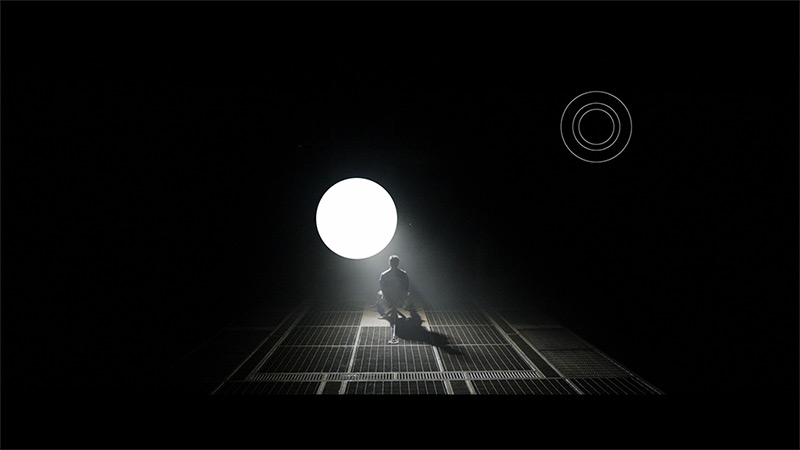
Result
58,650:1
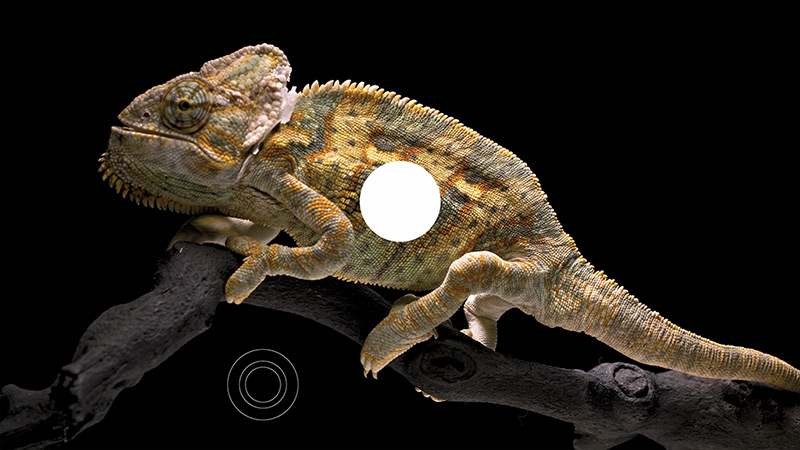
Result
37,150:1
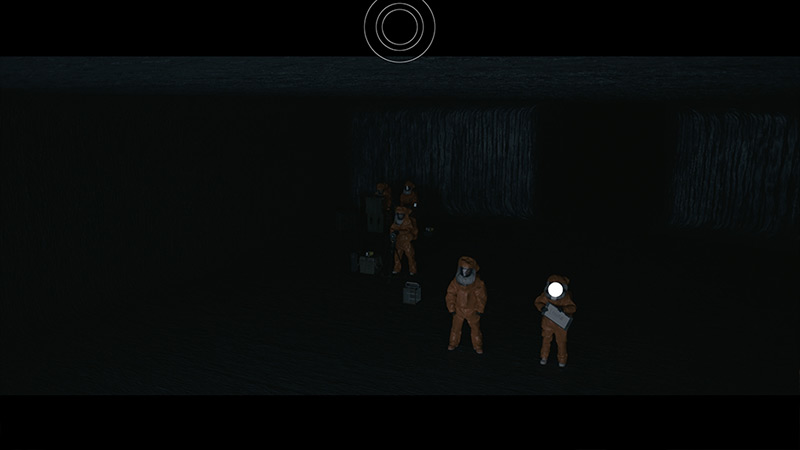
Result
10,850:1

Result
6,150:1
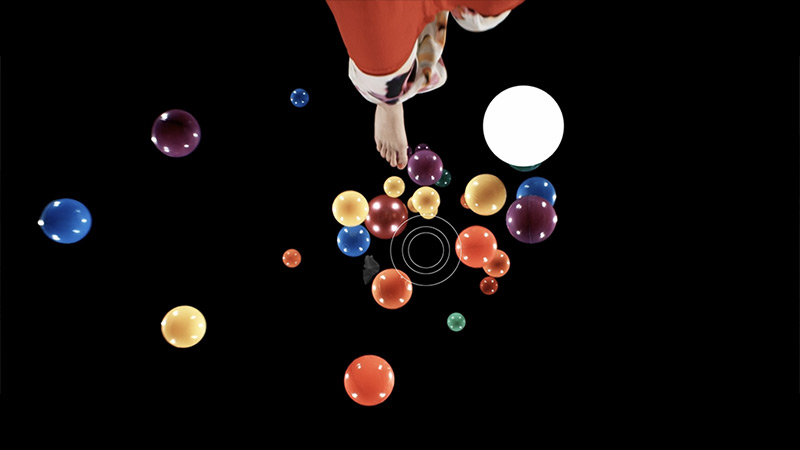
Result
5,100:1

Result
126,250:1

Result
20,900:1

Result
19,200:1

Result
4,900:1

Result
4,550:1
Halo effect and black detail visibility:


The model name 8709 "PML" refers to Philips mini-LED technology, but can we really call its backlighting that? In the 65-inch version, we counted only 96 local dimming zones. For mini-LED standards, this number seems too low, raising questions about whether we are actually dealing with a full-fledged mini-LED here. However, if we look at the quality of black, the TV performs quite well. On the first two test screens, as well as in less demanding scenes, the image is quite decent – blacks are deep and the contrast is satisfactory. Problems start to arise in more complicated scenes, such as the last three test screens, where small light elements appear on the screen. The local dimming algorithm seems to "get lost," unable to decide whether to brighten or darken a certain area. The result is visible errors – reduced black quality and unevenness of the image. An example of the local dimming zones in action can be seen in a scene from the movie Sicario 2. You can see how the dimming zones try to reproduce details, but at the same time it leads to slight lightening around the helicopter lights. Nevertheless, despite these shortcomings, the blacks in the Philips PML8709 perform quite well, especially considering its price class.
QNED91T is a television with MiniLED backlighting, and in the tested size of 65", we counted 160 local dimming zones. The unit we tested, with a "1" at the end, is equipped with a VA panel, which offers significantly better contrast than IPS panels, which – note – can be found in the LG QNED90T. Therefore, it is worth being careful when choosing a version to avoid disappointment regarding contrast. The QNED90T model is hard to acquire in Poland, but distribution can vary. Returning to our contrast tests, it performed really well in less demanding scenes. For example, in one of the scenes from the film "Oblivion," we observed perfect separation of lights – it looked impressive. However, not everything is so straightforward. In a scene from "Sicario 2," we noticed that the screen is distinctly darker, deviating significantly from the reference image appearance. The television effectively eliminates the halo effect (i.e., glow around objects), but this comes at the cost of brightness – quite a considerable one. Despite these compromises, the contrast of the LG 65QNED91T6A is really solid. Of course, as with MiniLED TVs, one must reckon with certain limitations, but the overall impressions are positive.
HDR effect quality
4/10
5.2/10
Luminance measurements in HDR:

Result
367 nit
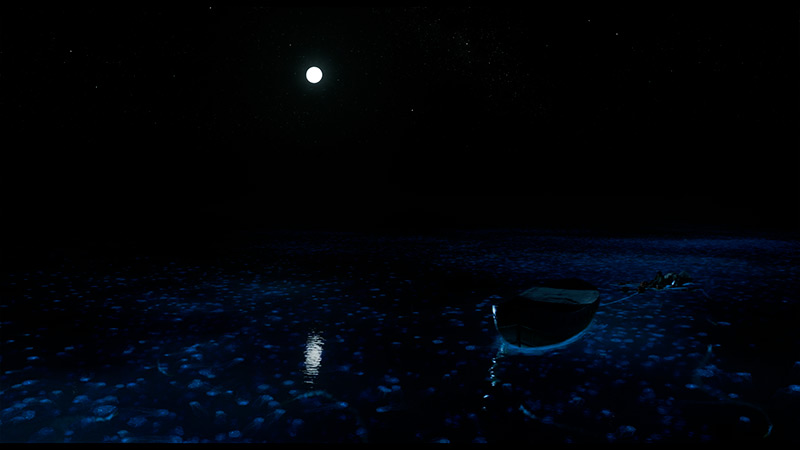
Result
126 nit
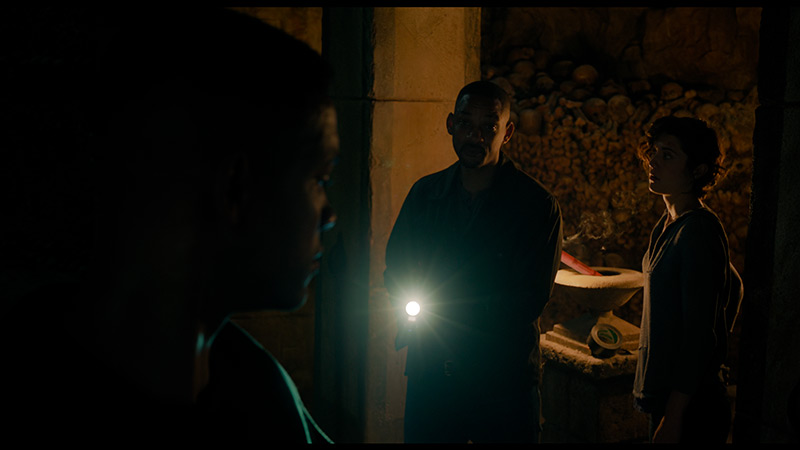
Result
309 nit
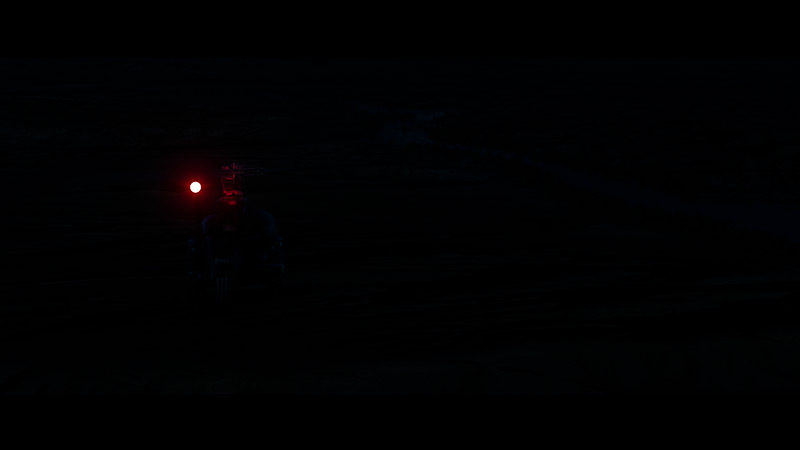
Result
119 nit

Result
348 nit

Result
1069 nit

Result
180 nit

Result
577 nit

Result
96 nit

Result
674 nit
Scene from the movie “Pan” (about 2800 nits)


Scene from the movie “Billy Lynn” (about 1100 nits)


Static HDR10


Dynamic: HDR10+
Dynamic: Dolby Vision


HDR luminance chart:
LG QNED91T6A
HDR luminance
Philips PML8709
HDR luminance
Looking at the contrast results, we expected that the algorithms responsible for the zones in the Philips PML8709 would be at least decent. However, what we encountered during testing is hard to explain. The maximum brightness we were able to achieve was only 350 nits, which is definitely too low to fully enjoy HDR effects. In practice, the TV barely stands out against an average SDR. The situation becomes even more surprising in the case of test scenes, such as the second one from the movie Life of Pi or Sicario 2. Small light elements reach only 120 nits there, making them practically invisible. Such a level of brightness is completely inadequate to modern HDR standards and significantly diminishes the viewing experience of high-quality content. The only bright spot in this category is the very good coverage of wide color gamuts – 97% DCI-P3 and 83% BT.2020. This ensures that colors are saturated and well reproduced, which can improve the overall viewing experience of HDR materials, even if just a little. However, the lack of appropriate brightness means that even this cannot save the Philips PML8709 in this category.
As befits a MiniLED television, QNED91T LG easily exceeds the magic barrier of 1000 nits on the luminance chart. In scenes where light played a key role, the effect was truly decent. For example, 1000 nits in the first scene of "Life of Pi" is really an impressive value, and the 600 nits achieved in scenes three and five allowed us to feel the true magic of HDR. However, problems arise with very small light elements on the screen, such as the moon, lanterns, or lamps. A value of around 100 nits - to put it bluntly - is disappointing, as these elements are so dark that they are barely visible. It is worth praising the television for covering the DCI-P3 colour gamut at 96% and BT.2020 at 75%. LG QNED91T leaves us with mixed feelings, mainly due to very aggressive dimming algorithms, which, while effectively eliminating the halo effect, do impact the brightness of smaller elements.
Factory color reproduction
3.9/10
6/10


Factory Mode
After calibration


Factory Mode
After calibration
Although theoretically the Filmmaker mode on the Philips PML8709 should provide natural color reproduction, in reality it resembles a store mode more. In the white balance, both for HD and 4K content, there is a clear dominance of blue. This makes the image appear washed out and cold, which is particularly noticeable in the comparison picture below.
The brightness characteristics also leave much to be desired. Both the gamma and the EOTF curve show excessive screen brightness. As a result, there is a loss of detail in both the brighter and darker parts of the image, which further diminishes its credibility and naturalness. Bright elements appear unnaturally flat and little varied.
These significant problems in white balance and brightness characteristics lead to noticeable color reproduction errors, which can be easily seen in films as well as in the Colour Checker test. The colors are imprecise, affecting the overall image quality and visual experience. The factory settings require substantial improvement to fully enjoy the potential of this television.
We conduct all our tests in the best picture mode on each TV. In this case, as usual, it is the Filmmaker mode. The name of the mode suggests perfect colour reproduction; however, there were noticeable deviations from the correct image. Our unit, in terms of white balance, showed a significant drop in shades of blue - both in SDR and 4K HDR material - which caused a clear yellowing of the image, noticeable in comparison scenes from the film with Tom Cruise. As we described earlier, QNED91T has some tendencies to brighten the screen. This is confirmed by the gamma, which is significantly lower than the reference value of 2.4. On the other hand, the EOTF curve, responsible for brightness in 4K content, showed some issues with the TV dimming the image in the darkest areas, which we could observe in the paragraph describing HDR effect quality. Although the Filmmaker mode is quite a decent "out of the box" mode, it still requires some adjustments.
Color reproduction after calibration
7.6/10
7.8/10




Philips offers advanced image calibration tools in its televisions, which we decided to fully utilize. The effects? While we managed to improve many aspects, it was not without difficulties. White balance was one of the biggest challenges – despite our efforts, it can be called a battle against windmills. We managed to correct it significantly, making the image look much better than in the factory settings, but it is still far from perfect. Particularly in some scenes, a subtle dominance of blue is noticeable, though not as intense as before. We achieved significant improvement in brightness characteristics – gamma now presents itself much more stably. The EOTF curve looks correct at first glance; however, when analyzing film content, it becomes evident that the television has difficulty maintaining the appropriate characteristics. The algorithms "struggle" to adjust brightness, which may result from the limited number of dimming zones that do not always cope with more complex scenes. Overall, the image after calibration looks much more pleasant to the eye – colors are more natural, and errors in color reproduction have been minimized. Although it's still not perfect, the Philips PML8709 now presents itself much better than in the factory settings.
LG offers advanced calibration tools in its televisions such as 65QNED91T6A, which we took advantage of. When it comes to white balance, we were able to significantly correct it in SDR content. The picture mode in 4K HDR quality posed greater challenges, which, although still not perfect, looks better than before calibration. The errors on the Color Checker palette and the colour palette are much smaller than in factory settings. Regarding brightness characteristics, gamma for HD content is practically ideal, with a slight exception at the end of the graph. However, the biggest issues the television had were with brightness in 4K HDR content. Analyzing the EOTF characteristics in films, we noticed that the television manipulates brightness quite significantly, which we observed in earlier tests. Brightness is considerably boosted compared to the graph in the static test, and the television brightens certain scenes to the extent that some smaller elements lose detail. Unfortunately, this is caused by an average local dimming algorithm in this model. Nevertheless, calibration yields decent results, especially in terms of precise colour reproduction.
Smoothness of tonal transitions
9.1/10
8.5/10












The smoothness of tonal transitions in the Philips PML8709 is at a very high level. Color gradation is extremely smooth, and transitions between shades look natural and detailed. Even in more demanding scenes, the television performs excellently. Minor issues may arise with bright elements, where the gradation can be slightly less precise. However, these are such subtle differences that only the most demanding purists will notice them. For most users, the effects will be fully satisfying, and the image will maintain its impressive quality.
The gradation on LG QNED91T looks very good. There are only slight cut-offs in the brightest scenes, but the television handles blacks very well, providing smooth tonal transitions. As a result, the image is natural and pleasant to the eye, with no noticeable issues.
Image scaling and smoothness of tonal transitions
6.9/10
7.5/10
Smooth transition function


Image without overscan on the SD signal


The distortion reduction function in the Philips PML8709 smooths tonal transitions, but its effectiveness leaves much to be desired. We recommend setting this option to "Medium" – at this level, the effect is noticeable but not excessive. Unfortunately, compared to other Philips models, the smoothing effect is less effective, meaning that some tonal transitions may still appear slightly uneven. An additional drawback is that this function also smooths other details, such as material textures like shirts, which can affect image sharpness.
As for image scaling, the television performs very well. The image appears plastic and free of noticeable "jaggies." This effect may appeal to many users, although some may prefer a more pronounced look. Fortunately, the television allows for adjusting the sharpness parameter, enabling us to tailor the image to individual preferences.
When it comes to tonal transitions in lower quality materials, the TV offers the already-known feature from LG TVs - "Smooth Gradation." We can control it at three levels: low, medium, and high. We recommend using the medium option, as it effectively removes tonal transitions without causing noticeable issues with removing the structure of objects or other artefacts.
As for image scaling (upscaling), LG's Alpha processor handles this well. The image appears very plastic, with slight jaggedness in some elements, which does not significantly affect the quality. It looks really okay, and the overall effect is very satisfactory.
Blur and motion smoothness
5/10
7.5/10


Blur (native resolution, maximum refresh rate):






Blur (BFI function enabled):



Philips PML8709 is one of the few models with mini-LED technology on the market that offers a refresh rate of 60 Hz. Although it is not a panel for the most demanding gamers, it should satisfy those who mainly watch movies. The television is equipped with the "Motion Style" feature, which is a motion smoother that allows you to adjust the fluidity of motion according to your preferences – from a more "plastic" appearance to a cinematic aesthetic with clearly visible frames.
The television has a refresh rate of 120 Hz, which should satisfy most users in terms of motion smoothness. Additionally, QNED91T is equipped with the TruMotion feature, which allows for smoother image display in movies. As part of this feature, we can adjust the "De-Judder" and "De-Blur" sliders. The "De-Judder" slider is responsible for reducing jitter in movies, which is particularly useful when playing content with a lower frame rate, while "De-Blur" helps reduce blurriness in fast scenes, which is essential for sports or dynamic shots.
Console compatibility and gaming features
6/10
9.8/10
- ALLM
- VRR
- VRR range48 - 60Hz48 - 120Hz
- Dolby Vision Game Mode
- Correct implementation of HGIG
- 1080p@120Hz
- 1440p@120Hz
- 4K@120Hz
- Game bar








Philips PML8709 is a television aimed more at occasional gamers, mainly due to its 60 Hz panel, which does not meet the expectations of the most demanding users. However, for those who appreciate gameplay at a more measured pace, this model may prove sufficient.
The television offers several gamer-friendly features, such as ALLM (automatic switching to game mode) and VRR (variable refresh rate), which help in displaying images more smoothly without annoying stutters. Moreover, in terms of HDR, we find here the implementation of HGiG, which adjusts the HDR effect to the specifics of games, providing a more natural image in appropriately optimized titles. Unfortunately, there is no support for Dolby Vision mode, which may be felt in games that utilize this format.
A nice addition is the presence of a basic "Game Bar," which allows for quick preview and modification of key settings related to gaming. It's a simple yet helpful feature, especially for those who often change their setup between different types of gameplay. Despite certain limitations, the Philips PML8709 offers a solid set of features for less demanding gamers.
The LG 65QNED91T6A television is equipped with HDMI 2.1 ports with a full bandwidth of 48 Gb/s, providing full support for all standards needed for gaming on modern consoles. We can count on support for variable refresh rate (VRR) and auto low latency mode (ALLM). This ensures smooth gameplay without delays.
With support for all popular HDR standards in games, such as HGiG and Dolby Vision, we can fully harness the potential of the PS5 and XBOX One consoles. The television also easily handles lower resolutions than 4K, so even older consoles look good on it. The Game Bar makes it easy to access gaming-related settings, allowing us to quickly and intuitively adjust picture parameters and features for gamers. Additionally, the QNED91T offers NVIDIA GeForce Now functionality, enabling us to game in the cloud without needing a console. However, it should be noted that this solution is quite expensive and somewhat falls short compared to Xbox Game Pass, which is available only on Samsung TVs.
QNED91T LG is a great choice for less experienced and more advanced gamers looking for a versatile television for gaming.
Input lag
10/10
9.8/10
SDR
HDR
Dolby Vision
The Philips PML8709 performs very well in terms of input lag. With supported resolutions, results of around 13 ms are more than sufficient to ensure comfortable gameplay. Such a response time means that even more dynamic games do not cause annoying delays. This allows players to enjoy smooth gameplay without unnecessary stress.
The input lag on QNED91T is really very low, even in Dolby Vision mode. This allows for a quick response time, which is very important in dynamic games where every millisecond counts. Regardless of whether we play in standard mode or HDR, the TV offers very good results that will satisfy even the most demanding gamers.
Compatibility with PC
3.5/10
7.6/10


Philips PML8709 offers a dedicated mode for PC, but its capabilities are highly limited. The TV does not support chroma 4:4:4, which significantly affects the readability of fonts – text appears blurred and is difficult to read, disqualifying this model for those planning to use it as a monitor for work or document browsing. Additionally, although the TV demonstrated compatibility in G-Sync tests, the image while using this feature is very unstable, with frequent stuttering. Such unpredictability eliminates the benefits that adaptive sync support should provide.
The only positive aspect regarding PC compatibility is the low input lag, which can be an advantage for those using the TV mainly for gaming. Nevertheless, the limitations in chroma support and issues with G-Sync mean that the PML8709 is not the best choice for PC users.
When it comes to gaming on a computer, LG QNED91T easily synchronizes with NVIDIA graphics cards and supports G-Sync. The very low input lag makes gaming with a personal computer really enjoyable. The TV supports chroma 4:4:4, which provides excellent text readability. Although we noticed slight font blurring around the edges, overall the image looks great, and readability is acceptable.
Viewing angles
2.9/10
3.4/10
Philips PML8709, equipped with a VA matrix, offers average viewing angles typical of this type of panel. The picture loses quality when viewed from a larger angle – colors fade, and contrast significantly decreases. This is a characteristic feature of VA matrices and should be kept in mind, especially if we plan to watch the TV from different places in the room. For viewers sitting directly in front, however, the image remains clear and well reproduced.
As we mentioned in the paragraph about contrast, the TV is equipped with a VA panel, which usually offers very good contrast compared to IPS panels. Unfortunately, VA panels have their weakness in the form of limited viewing angles, which is also visible in the case of QNED91T LG. The viewing angles are not the best here, and while the use of a coating to widen the angles could significantly improve the situation, unfortunately, we do not have that here. As a result, the image loses quality when viewed from a greater angle, which can be problematic when multiple people are watching simultaneously.
Daytime performance
4.8/10
6.1/10




Panel brightness
Average luminance SDR
LG QNED91T6A: 573 cd/m2
Philips PML8709: 337 cd/m2
The Philips PML8709 is equipped with a satin matrix, which handles glare suppression moderately well. In moderately lit rooms, reflections will not be too bothersome, however, in very sunny conditions, the situation can become problematic. An additional challenge is the relatively low screen brightness, which is about 330 cd/m². This level may prove insufficient for comfortable viewing in bright rooms, where the image can appear too dark and unclear. The TV will perform better in controlled lighting conditions, but for those looking for a model that copes well during the day, this may be a significant limitation.
The LG 65QNED91T6A television is equipped with a satin matrix, which performs average in handling direct light reflections, such as from lamps or wall sconces. In the first test photo with a large lamp, it is visible how the reflection "spreads across the screen." However, the QNED91T makes up for it in terms of brightness - the average SDR brightness of 580 cd/m² is sufficient for watching television even in more challenging lighting conditions. As a result, despite issues with reflections, the television performs well during the day.
Panel details
Subpixel Structure:


Panel uniformity and thermal imaging:


TV features
6.5/10
8.4/10
- HDMI inputs3 x HDMI 2.0, 0 x HDMI 2.10 x HDMI 2.0, 4 x HDMI 2.1 48Gbps
- OutputsToslink (Optical audio), eARC (HDMI), ARC (HDMI)Toslink (Optical audio), eARC (HDMI), ARC (HDMI)
- Network InterfacesWi-Fi 2.4GHz, Wi-Fi 5GHz, Ethernet (LAN) 100MbpsWi-Fi 2.4GHz, Wi-Fi 5GHz, Ethernet (LAN) 100Mbps
- TV receptionDVB-T, DVB-T2, DVB-S, DVB-S2, DVB-CDVB-T, DVB-T2, DVB-S, DVB-S2, DVB-C
Classic features:
- Recording to USB (terrestrial TV)
- Recording programming
- Picture in Picture (PiP)
- RF remote control (no need to aim at the screen)
- Backlit remote control
- Teletext
- Audio only mode
- Bluetooth headphones support
- Simultaneous Bluetooth headphones & TV audio
Smart features:
- AirPlay
- Screen mirroring (Windows Miracast)
- Voice search
- Voice search in native language
- Ability to connect a keyboard and mouse




The Philips PML8709 runs on the Google TV operating system. This is quite a surprising choice, considering it is not the flagship model of the brand. Fortunately, it has avoided the implementation of the less popular TitanOS, which can be seen as a plus. Google TV offers a well-known, clear interface and extensive capabilities for installing applications, making the television more versatile.
In terms of user functionality, the television performs solidly. Daily use of the device is enjoyable thanks to support for Polish voice search. The ability to connect peripheral devices, such as keyboards, mice, or headphones via Bluetooth, increases its functionality. Unfortunately, the PML8709 does not offer more advanced options such as USB recording or PiP (picture-in-picture) functionality, which may disappoint more demanding users.
An interesting fact, and also a significant surprise, is the lack of Ambilight technology, which Philips is widely known for. The decision to omit this technology in the PML8709 model seems incomprehensible, especially since Ambilight is often cited as one of the biggest advantages of televisions from this brand.
The most important thing in today's TVs, besides picture quality, is the operating system. The one available in LG models is really very good. Of course, we are talking about the WebOS system, which offers the most popular apps similar to GoogleTV. What sets this system apart is primarily the great remote control with an accelerometer - the Magic Remote, which resembles a magic wand. Controlling with this remote is extremely convenient.
In terms of user functions, the TV offers practically everything one could wish for. Here we find the ability to record programs from built-in tuners, support for AirPlay to connect an iPhone, and a mirroring function. We can easily connect keyboards, mice, or headphones, although keyboards are not necessary thanks to the convenient Magic Remote. Unfortunately, there is no PiP (Picture-in-Picture) function, but this is such a specific feature that only those who actually need it will feel its absence. The QNED91T is a TV that does not disappoint when it comes to everyday enjoyment of its use.
Playing files from USB
7.6/10
8.5/10
Supported photo formats:
Maximum photo resolution:


The Philips PML8709 handles multimedia file playback from USB well. The TV should have no problem supporting most popular video, audio, and photo formats, making it a versatile tool for home entertainment. Files are read smoothly, and the interface of the built-in player is simple and intuitive.
However, a significant downside is the lack of support for Polish characters in subtitles, due to the incomplete implementation of the UTF-8 standard. Subtitles with Polish characters are displayed incorrectly, which can be irritating for people watching movies in their native language. This shortcoming means that users seeking full compatibility with subtitles may have to turn to external media players.
The built-in player in QNED91T should satisfy most users. It easily supports Polish characters and plays movies with subtitles from external drives. The player also handles most audio and photo formats, except for Apple HEIC files.
Apps
9.6/10
8.3/10














































Sound
5.1/10
6.9/10
- Maximum volume--
- Dolby Digital Plus 7.1
- Dolby True HD 7.1
- Dolby Atmos in Dolby Digital Plus (JOC)
- Dolby Atmos in Dolby True HD
- DTS:X in DTS-HD MA
- DTS-HD Master Audio
The sound quality in the Philips PML8709 is average and standard for a television equipped with 2 x 10 W speakers. The sound is sufficient for everyday viewing, but it's hard to expect deep bass or clear details in more demanding scenes. On the plus side, it does support Dolby Atmos and DTS.
LG QNED91T is equipped with a set of 4 speakers in a 2.2 configuration with a total power of 40W. The television sounds quite pleasant, and the subtle bass is noticeable. Of course, it is not on the level of an external audio system, such as a soundbar or home theatre, but it is sufficient for everyday use. It is also worth praising the support for audio formats DTS:X and Dolby Atmos, which significantly improve the quality of the audio experience.
